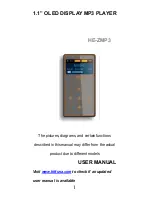
BDS 280/580
10
connections
Connecting Your HDMI Source Devices
If you have any source devices with an hDMI connector, using it will provide the best
possible video and audio performance quality. Since the hDMI cable carries both
digital video and digital audio signals, you do not have to make any additional audio
connections for devices you connect via an hDMI cable.
Connecting Your Digital Audio Source Devices
Optical Audio Source Device
If up to two of your non-hDMI source devices have optical digital outputs, connect
them to the system’s optical digital audio connectors.
Coaxial Digital Audio Source Device
If one of your non-hDMI source devices has a coaxial digital output, connect it to the
system’s coaxial Digital Input connector.
NOTE: Make only one type of digital connection (HDMI, optical or coaxial)
from each device.
Connecting Analog Audio Source Devices
use the system’s Aux In connectors for up to two source devices that don’t have hDMI or
digital audio connectors.
Connecting to a Local Area Network (LAN)
use a cat. 5/5e network cable (not supplied) to connect the BDS system’s network
connector directly to a network router, a network switch, a network modem or an
ethernet network wall jack that has Internet access.
NOTE: If you have a wireless home network, you can optionally skip this step
and use the BDS on-screen menus to connect it to Wi-Fi later on.
Connecting the Subwoofer Trigger Output
If your system has equipment that can be controlled by a Dc trigger signal, connect
it to the system’s Subwoofer Trigger connector with a mono 1/8-inch (3.5mm) mini-
plug interconnect cable. The system will supply a 12v Dc (100 mA) trigger signal at this
connection whenever it is powered On.
Subwoofer
To Internet
Network Modem











































